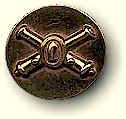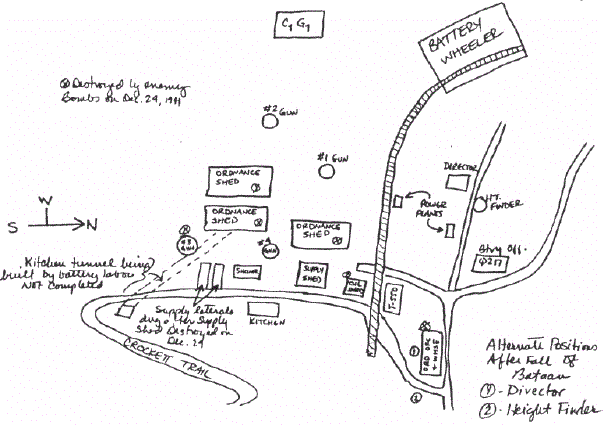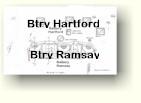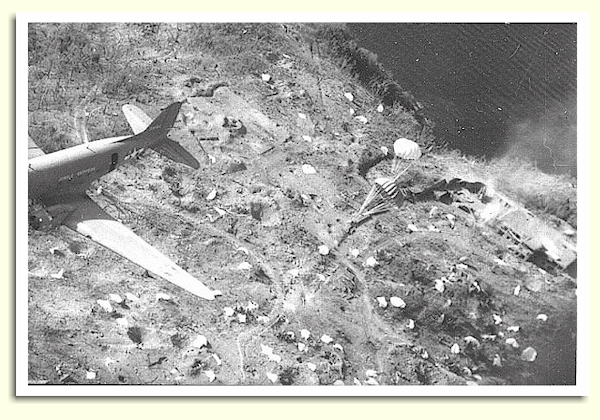| |
 |
|





 |
"boston"
Battery
“B” 60th coast artillery (a.a.)
by Capt. Arthur E. Huff
|
|
November 28, 1941 |
The
1st Battalion, 60th CA (AA) held a routine training Night Road March on the
evening of November 28, 1941. Upon returning to the barracks about
8.45 P.M.., with his Battery, Captain Arthur E. Huff (C.O. of Battery "B"),
found orders to hold the Battery in readiness and to report to Battalion
Headquarters. At Battalion Headquarters, Capt. Huff was informed that
the situation was critical, all leaves and passes were cancelled, and that
he should take his battery to its War Position on an alert status
immediately. Returning to the Barracks, the minimum manning details
were sent to the War Position under Capt. L.C. Baldwin, the Executive
Officer. The Battery was reported "Ready for Action" at 9.50 P.M.
The balance of the
Battery were ordered to take their showers and stand by with Field
Equipment. As soon as this was accomplished, Capt. Huff too, ordered
them to the War Position and the first detail was sent back to the Barracks
to take their showers and pick up their Field Equipment. |
|
November 29, 1941

'We
Rule the Heavens.'
|
The morning of
November 29, 1941, the Anti-Aircraft Defenses of Corregidor were placed
on "M" Day Status.
The service
rings were placed in the fuze cutters and the minimum manning crews
(i.e. Two 3" Guns, 2 Machine Guns, and the Range Section) were kept at
the position, while the rest of the men were sent back to the Barracks
in small Details to move the necessary equipment to the War Position, to
live at the position with the maximum comfort and even luxury that was
possible.
The evening
meal on November 29, 1941 was served from the Field Kitchen.
The Service
Ammunition was cleaned and made ready for Action, a system of Air Guards
(Lookouts) established and work continued on strengthening the Splinter
protection...(missing text).... putting the practice rings in the fuze
cutter was held on only 1 gun at a time so as to have 3 guns always
ready for action. The Air Missions for Drill were cancelled on
Dec. 1.
By this time, a
Field Day Room had been set up with one of the Batteries Pool Tables,
Magazines and Barber Shop equipment. |
|
December 2, 1941
|
Instructions
were issued on Dec. 2, authorizing the granting of 24 hour passes to not
to exceed 3% of the Battery Personnel and on Dec. 3, Capt. Baldwin
was transferred to 1st Battalion Headquarters as Battalion Adjutant. |
December 5 1941

|
Instructions
were received on Dec. 5, that friendly aircraft would give an
identification signal when approaching Corregidor. At 9.10 P.M. of
this date, a report was received that Enemy Aircraft, probably on a
Reconnaissance mission, were over Monaboli and orders were received to
fire on the leading element if the planes approached Corregidor.
Battery B went on Post Guard on Dec. 5, with Capt.. Huff as O.D., Lieut.
D. E. Wiser as O.G. and
about half the enlisted personnel on post. Lieuts. Chevalier and
Crawford remained with the balance of the battery at the War
Position. |
|
December 5, 1941
|
On Dec. 6,
orders
were received not to fire on planes during the day time unless they were
positively identified as enemy but that at night all planes not giving
recognition signal were to be fired on. |
|
December 7- 8, 1941

|
The following
orders and instructions were received on the momentous night of Dec.
7-8, 1941:
00:23 AM -
Aerial activity 50 miles N.W. of Corregidor
04:09 AM -
Ordered to double all Air Guards and Observers at once
04:40 AM -
Black-Out Ordered
05:04 AM - All
Passes cancelled
05:14 AM - All
Batteries alerted
06:29 AM -
Message Received "A State of War now exists with Japan. All units will
govern themselves accordingly.."
Rumors were
heard which were later verified of the Japanese attack upon Pearl Harbor
(Hawaii) and Clark Field (P.I.)
Test fired
machine guns and adjusted head space. |
|
December 9, 1941
|
On Dec. 9
permission was received to fire one settling round from each gun.
The firing of these rounds was made a gala affair with all members of
the Battery present (in shifts) since this was the first time that the
vast majority of the men had even seen the 3 inch Antiaircraft gun
fired.
During the
night of Dec. 9-10, the A.A. Batteries were alerted, but no planes were
seen. |
|
December 10, 1941

*
"The early Jap
formations did approach Corregidor both from the east, and the south.
They did not overfly the Rock, they split and flew around
the
island. Boston did not turn the formations. Denver alone turned one
formation, and all batteries fired on the large group which split and
flew around the island.
The
Japs knew exactly where the fixed guns were even before the war broke
out, but they didn't know the co-ordinates of the anti-aircraft
emplacements, because we'd only just dug them in. Captain Starr
figured that they sent some aircraft towards our positions so they could
observe where our anti-aircraft fire was coming from. "
Al McGrew |
December 10,
1941,--a momentous day for Battery "B" 60th CA (AA). On this day we
received out first opportunity to fire on the enemy when a flight of 27
Japanese, twin motored heavy bombers flew over* Corregidor, at an
altitude of 22 22,000 feet, in returning from a raid on the Cavite Naval
Yards. All the AA Gun Batteries fired upon these planes, "B"
Battery firing 45 rounds, but without any apparent effect. In fact, the
planes did not even wave their wings much less break formation.
Later in the day the Battery
Commander was notified that "B" Battery had been selected, because of
its position on Topside, commanding the China Sea which was the logical
avenue of approach of the enemy, to be equipped with mechanical time
fuzes. We were to receive all of the Mechanical Fuzed ammunition
in the Philippines --some 1500 rounds. The Fuze cam in the
director was changed, by the Battery Tech. Sgt. (J.W.Connell) as soon as
the first of the ammunition arrived.
-o-0-o-
|
|
December 12, 1941
|
It wasn't until
Dec. 12, that we had a chance to test the assumed muzzle velocity of the
new ammunition by firing 7 rounds at a Jap medium bomber. The
bursts
were
close but a little low so the assumed muzzle velocity figure was dropped
25 ft. seconds. |
|
December 13, 1941
|
Again on Dec.
13, we had a chance to test the assumed muzzle velocity when a flight
of 17 Jap heavy bombers flew over Corregidor. All the Corregidor AA
Batteries opened fire and the formation immediately split -- 8
planes swinging south over the China Sea. "B" Battery continued
firing on these planes, firing a total of 76 rounds and came very close
to them, probably scoring some hits, but the planes continued on their
way.
In consultation
with the Battalion Commander (Lt. Col. Amoroso it was decided that due
to the extreme shortage of the Mechanical Fuzed ammunition, "B" Battery
would only fire 6 rounds per gun (24 rounds for the battery) per flight
of planes.
Reports are
being received that the Navy Patrol has reported seeing wreckage of
planes for some 150 miles up the coast of Luzon and that the 60th
probably got 9 or 10 of these planes.
Manila and
Cavite were being bombed almost daily but the Japs gave Corregidor a
wide berth--all flights staying out of fuze range--even with the 30 sec.
Mech. Fuze. |
|
December 17, 1941

Japanese Heavy Bomber
Mitsubishi Type 96
"Nell"
|
The Corregidor
Units went on Field Rations on Dec. 17, 1941.
Work was
continued on the improvement of the position and artillery drill held
daily.
The Manila
Radio announced on Dec 22, that there were some 80 Jap transports at
Linguyan (Lingayan) Bay--evidently the big push on the Philippines is
on.
The Jap
continued to Bomb Manila and Cavite but stayed away from Corregidor,
although on the 24th a flight bombed some ships in Mariveilles
(Mariveles) Bay and came within fuze range of the Mech. Fuze. "B"
fired some 24 rounds at them but were unable to determine if we damaged
any
Also on this
day the Battery was inspected by the harbor Defense Inspector (Major
Conzelman) who stated after his inspection that our equipment, including
small arms, was in the best shape of any Battery he had inspected. |
|
Christmas Day, 1941
|
Christmas Day,
1941--but the Japs payed no attention to it. They bombed Cavite, causing
an Air Raid Alarm on Corregidor about noon time and interrupted our
Christmas Dinner..
The U.S.A.F.F.E.
and the Philippine Government evacuated Manila last night and moved to
Corregidor.
About midnight
of the 25th a tremendous explosion was heard and a fire observed in the
vicinity of Cavite. Learned the next day that this was the Navy
demolition of Cavite after their evacuation. Also learned that
Fort Wint (Subic Bay) had been evacuated by the C.A.C. |
|
December 26, 1941
|
On the 26th,
the Japs bombed the ruins of Cavite and also some boats in the Bay . . .
(illegible) . . . with the 30 sec. fuze. We fired about 62 rounds
with no apparent
results
-- decided to lower the assumed muzzle velocity again. |
|
December 27, 1941
|
Corregidor was
under a three hour Air Raid Alarm on the 27th while 65 Jap planes flew
over Manila Bay bombing Cavite and Cabcaben but they never approached
close enough to be fired upon.
The work of
improving the splinter protection was continuing and also the
installation of an underground Fire Control Cable system using some
salvage Marine Cable in place of the lq Conductor A.A. Cable. This
system, buried 4 foot under ground, should survive all but direct hits
and in that case we have our regular cables to put back in. |
|
December 29 1941

Gun
drill at an AA Battery.
(National Archives)
|
The first
bombing attack on Corregidor came on the 29th of December. The men were
working on the splinter protections when the AA Defenses were alerted by
"B" Battery Air Guards at 11 AM because of the approach of a flight of
Japanese heavy bombers. The attack lasted about 2 hours.
Wave after wave of 2 motored bombers, accompanied during the
latter stages by attack planes flew over the island bombing the
installations. The attack planes strafed the positions and dropped
small personnel bombs.
"B" Battery
suffered considerable damage during this engagement. Our position just
outside of the Seaward Defense Command Post, and near a 12" gun
battery', and on a line between two other 12" gun batteries, put us
right in an area heavily bombed. The guns were emplaced
around three warehouse sheds belonging to the Ordnance. These three
buildings, as well as the Ordnance Office and warehouse (which contained
1˝ million rounds of small arms ammunition) and which was only about 100
yards from the Range section installation, were hit and destroyed.
The smoke and noise, as well as the danger, from the exploding
ammunition seriously endangered the men but did not prevent them from
performing their duty. Eleven enemy bombs struck within 100 yards
of the guns. One bomb exploded within the No. 3 gun pit killing 2
men (Cpl. Cord-... and Pvt. Turner) and wounding and bruising the rest
of the crew. The gun itself was damaged and put out of action.
Blazing embers from one of the destroyed buildings flew into the pit of
No. 4 gun, damaging the ...(illegible)...and were thrown back out by the
gun crew who continued to fire the gun. The phone lines to the
guns were cut twice during the raid, and put back into service by the
communications detail under Cpl. Montgomery. The battery tractor
was destroyed and the battery supply shed and the oil storage shed were
hit by a shower of bomb fragments and small arms bullets from the
strafing attackers, destroying and damaging a considerable amount of
Battery equipment and property.
The personnel
bravery and coolness under fire of the vast majority of the men was
almost miraculous, considering that the majority of the battery
personnel had less than one year's service and had never even fired the
gun at a target practice. When the phone communications went out
between the C.P. and the guns and it became necessary to resort to an
auxiliary buzzer system, the buzzer worked at only one gun. The other
gun commanders showed great initiative in following the actions of the
one gun which was still in communications with the C.P. The actions of
the battery on this day displayed the esprit de corps of the
organization.
During this raid "B" Battery
fired about 280 rounds and destroyed several planes. The Japanese
gave Corregidor a breathing spell and stayed away until Jan 2, 1942, --
they probably spent this time licking their wounds!
"B" Battery
also spent this time in repairing the installations and getting the
equipment cleaned and back into action. The damaged gun was
removed from the pit and taken to the Ordnance Machine Shop for major
repairs.
Received a
communication from the Commanding General of the Harbor Defenses of
Manila and Subic Bays, commending the units of the A.A. Defense on their
fine work on the 29th. Also received a copy of a letter from the
Battalion Commander to the Regimental Commander commending the fine work
of "B" Battery on the 29th. Both of these were read to the
battery. |
| |

|
 |
 |
|
|

The same area in
Feb 1945, with Btty. Wheeler as the reference point for this
re-supply mission. The fires are still burning in Btty. Wheeler.
|